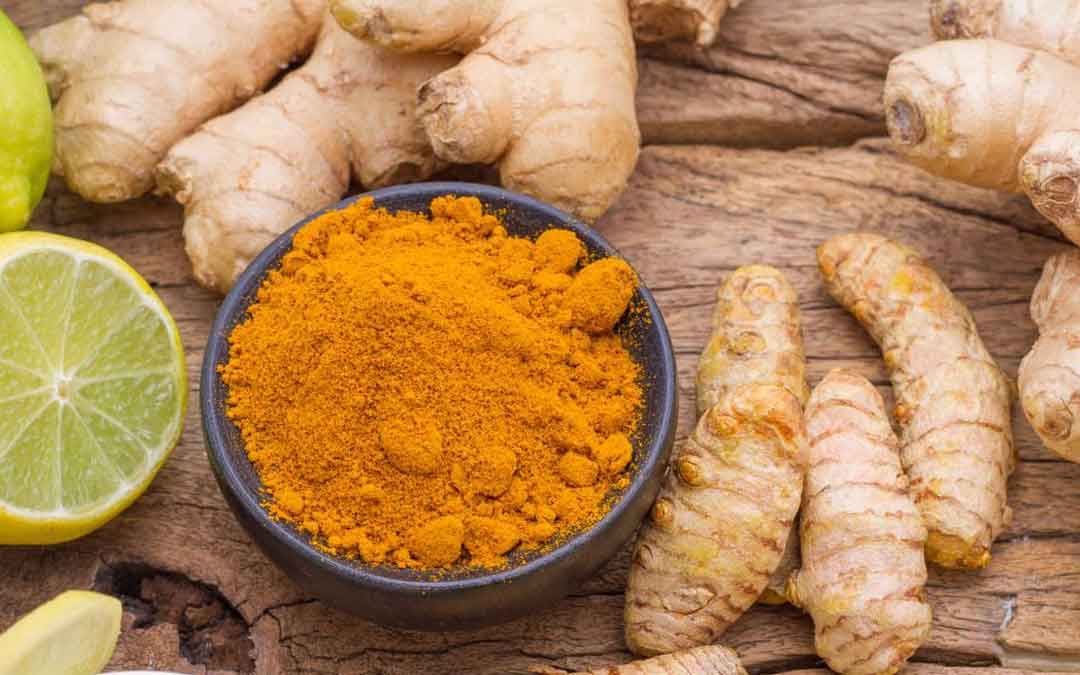Tips on growing ginger and turmeric

On my recent travels I was lucky enough to meet a man who grows ginger and turmeric in Queensland and he gave me some great tips. As well as confirming what I had written in a previous article in 2020 based on my own experience, I now have some specific tips to pass on from him.
Ginger (Zingiber officinale) and turmeric (Curcuma longa) are both members of the ginger family, Zingiberaceae, and both are perennial plants though often treated as annuals. They are tropical plants that love warmth, humidity, moisture and surprisingly, partial shade. Ginger especially does poorly in full sun while turmeric can better tolerate it but prefers partial shade.
The first step in growing your own, is to obtain a supply of ginger and turmeric, preferably organic, and definitely Australian. Imported rhizomes will have been sprayed with a shoot inhibitor so will not reproduce.
Ideally, plant in October but begin preparation in September. In September, cut the rhizomes into pieces each with a ‘knob’ which will bud. Leave them in the sun for a day for the wound to dry and then place these in a dark, airy place such as a cupboard for a month until they begin to shoot. That’s the time to plant the pieces out.
Prepare the soil well. Dig it over so that you remove all clods and sticks and stones, and incorporate compost. The soil needs to be ‘loose’, fertile and very well drained as soggy soil will rot the rhizomes. Plant each piece at a depth of about 2 cms and water well. Water regularly to keep the rhizomes moist but not sodden. Ginger will grow horizontally, close to the surface, while turmeric will grow vertically with the rhizomes deeper down in the soil. If you are growing these in pots, the ginger will be at the top of the pot when harvested and the turmeric at the bottom.
The rhizome will begin multiplying once the plant has flowered and needs 10 months to reach maturity. It can be harvested then but it is better to leave the crop in the ground for 2 years. Harvest when the leaves die down in August, and immediately set aside some rhizomes for dividing, preparing as above, and replanting in October. In the meantime, you can harvest small amounts by brushing back the soil and cutting pieces off.
To harvest, remove the soil around the withered stems by hand to assess how wide the clump is and then prise it out with a fork. Try to slide the fork beneath the clump and lift it to avoid piercing the rhizomes. Remove as much dirt as you can by hand and then hose the clump. You can break it up into smaller pieces to clean the rhizomes better. After that, comes curing which is really just the process of drying the skin and letting it harden. Leave the rhizomes outside on mulch in the sun for a couple of days and this will do the trick.
There are 2 ways to prepare the root. If you want dried turmeric and ginger, then slice the rhizomes into thin rounds – no need to peel – and dry them for 4-5 hours in a dehydrator. Then it’s blending time. I use a Nutribullet to blend them to a fine powder as my food processor is not strong enough. Roughly, the fresh weight will reduce by 75% once dried. The second way is to store it fresh in a bucket of sand. The sand will keep it fresh and keep mould away indefinitely. Alternatively for short-term storage keep it in the fridge for about 2 weeks, in a paper bag, before it is past its best.
Next month at the Sustainable Macleod Community Garden, we will be planting ginger and turmeric in a wicking bed in a polytunnel. We have previously grown galangal very successfully there. The conditions are ideal: consistently moist soil but no water-logging, warmth and humidity, and partial shade. Hopefully, there will be plenty to share with members in the future.
See also Growing, ginger, galangal and turmeric in Melbourne
Written by Robin Gale-Baker
